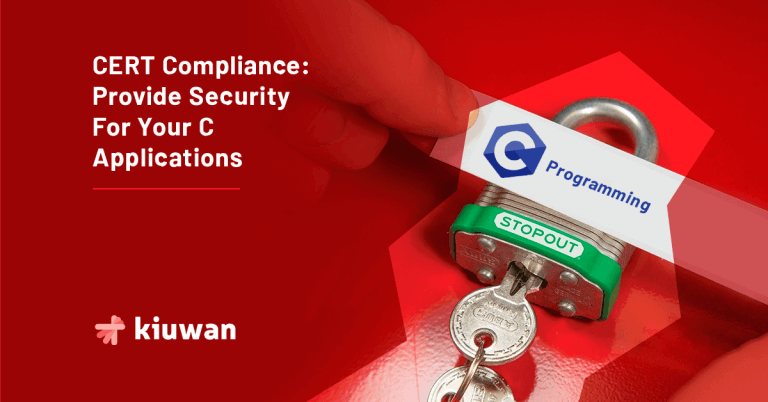

Today’s app development processes are incomplete without security integration. Security standards provide safeguards for companies to secure their apps and software from cybersecurity threats. NIST, OWASP, WASC, SEI CERT C and J, CWE, and BIZEC are among a growing list of high-security standards.
CERT, for example, defines guidelines and recommendations to help companies develop secure and reliable systems. While the recommendations focus on improving code quality, the rules ensure that your apps have fewer defects. Software developers and security professionals should work together to create compliant apps, as non-compliance often translates to significant vulnerabilities in apps and packages.
Before discussing how you could achieve CERT compliance in your app development process, let’s examine the CERT standard.
Carnegie Mellon University’s Software Engineering Institute developed the CERT standard. This set of guidelines is often referred to as the SEI CERT, which stands for Software Engineering Institute Computer Emergency Response Team. The CERT Coding standard is available for C programming (CERT C) and Java programming (CERT J). Top tech giants, including Oracle and Cisco Systems, have adopted these standards in their app development processes.
Companies seeking to fully leverage the benefits of these standards should incorporate a secure design into the app development process.
CERT rules consist of:
With the CERT standards, programmers adhere to a uniform set of rules tailored to their organization and the specific project at hand. That’s useful because, in matters of application security, personal preference often falls short of what is necessary. These standards should help you evaluate the security of source code in an unbiased way.
Version 1.0 of the CERT C Secure Coding Standard existed in June 2008. SEI introduced the second edition in 2014 and followed this up with the third edition in 2016. Developers employed a wiki community approach to the development process, allowing for regular updates.
The guidelines of the CERT standard consist of rules and recommendations. While a violation of a CERT rule raises a red flag about your code, violations of a recommendation will not pass as defective code. Organizations use manual inspection techniques or automated analysis to determine if their code conforms to these rules.
Recommendations offer suggestions to enhance code quality. A software product’s requirements often influence the recommendations for a development effort. A system with moderate conditions is likely to adopt fewer recommendations than one with strict requirements.
CERT compliance requires developers to fulfill the established rules. Organizations developing C programs should seek expert knowledge of CERT C rules and recommendations. With this knowledge and the correct set of tools, your firm will easily accomplish CERT C compliance.
Here are a few guidelines for compliance:
With the right software tools, developers can easily integrate compliance into their app development processes. Such tools will reveal any security vulnerabilities while helping your code conform to CERT C guidelines. Static analysis tools are especially popular as they intuitively examine source code, using coding rules as a reference.
Evaluating code with manual processes does not guarantee absolute immunity for your code. There is also a good chance you will miss out on source code security vulnerabilities. For efficiency and consistency, a SAST solution is a safe bet. These processes ensure you can test security well before completing the app development process.
Reliable security tools, such as Kiuwan Code Security, enable companies to create efficient security assurance programs for their applications, facilitating long-term compliance. By investing more in automated security protocols, companies can reduce the need for manual oversight and monitoring.
Compliance failure may lead to:
Some of the factors driving the popularity of static compliance tools are their speed and accuracy. In addition to detecting coding issues early, such tools also eliminate security vulnerabilities while monitoring code quality.
For data injection assessments, the parser checks commands and queries that require user input. In case of data breaches or irregularities in user input, the tools alert developers to potential vulnerabilities. Static tools also check the security of user authentication credentials. The engine flags any authentication information without encryption.
Developers can assess the security metrics report generated at the end of each security scan to maintain the security of their apps and programs. In addition to software system security, the metrics report covers the code’s maintainability, reliability, portability, and memory usage.
A suitable static analyzer tool should meet your needs and support your coding standards, specifically the CERT standard. Be cautious of tools that provide inaccurate diagnostics.
App security standards like SEI CERT help companies avoid damage from cybersecurity threats. Such measures will, however, not mean much if you fail to adhere to them. You don’t want high costs to keep these damages in check.
Is your code vulnerable to security attacks? Kiuwan Code Security can detect any weaknesses and help you create compliant software.
Contact us today.


